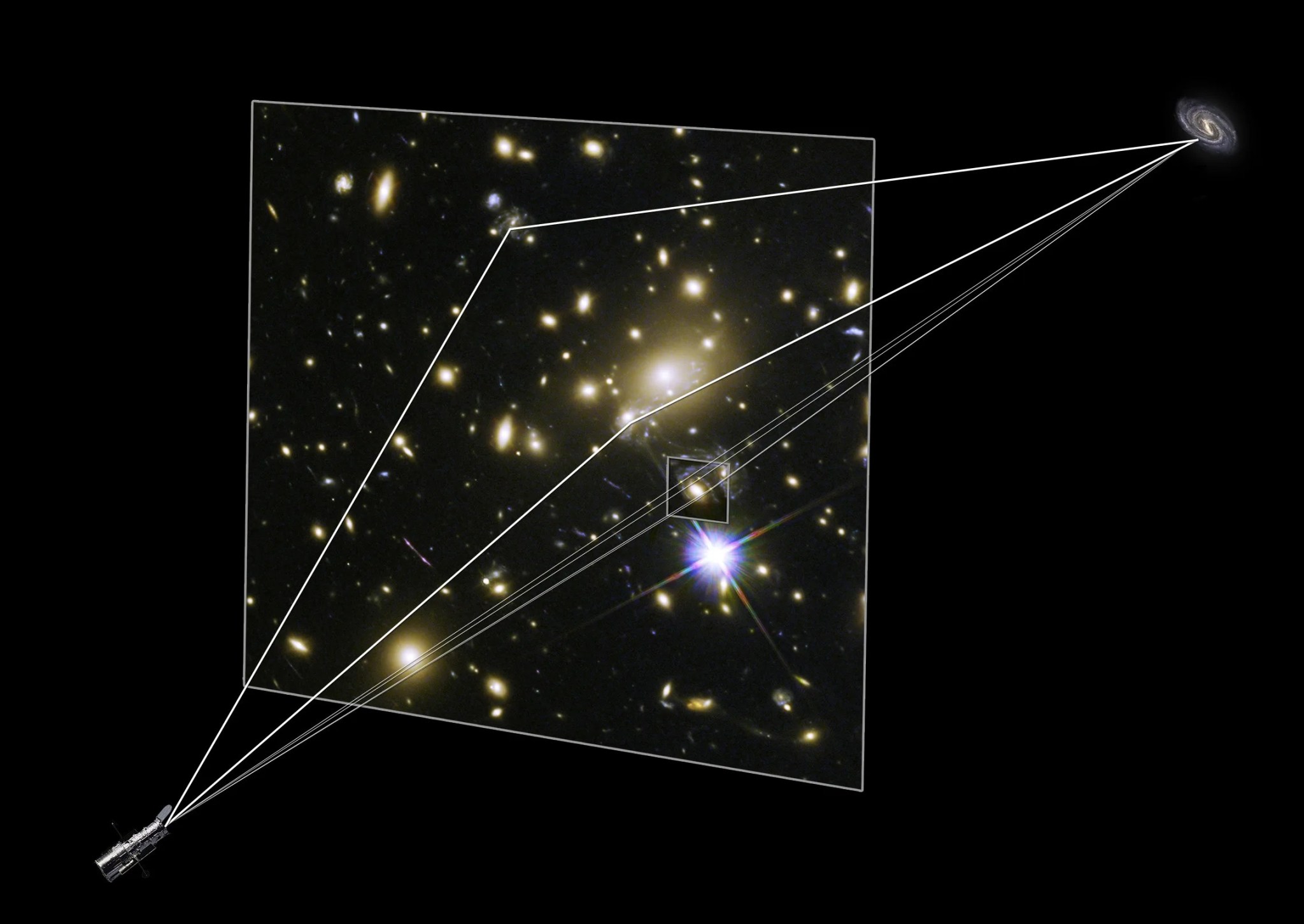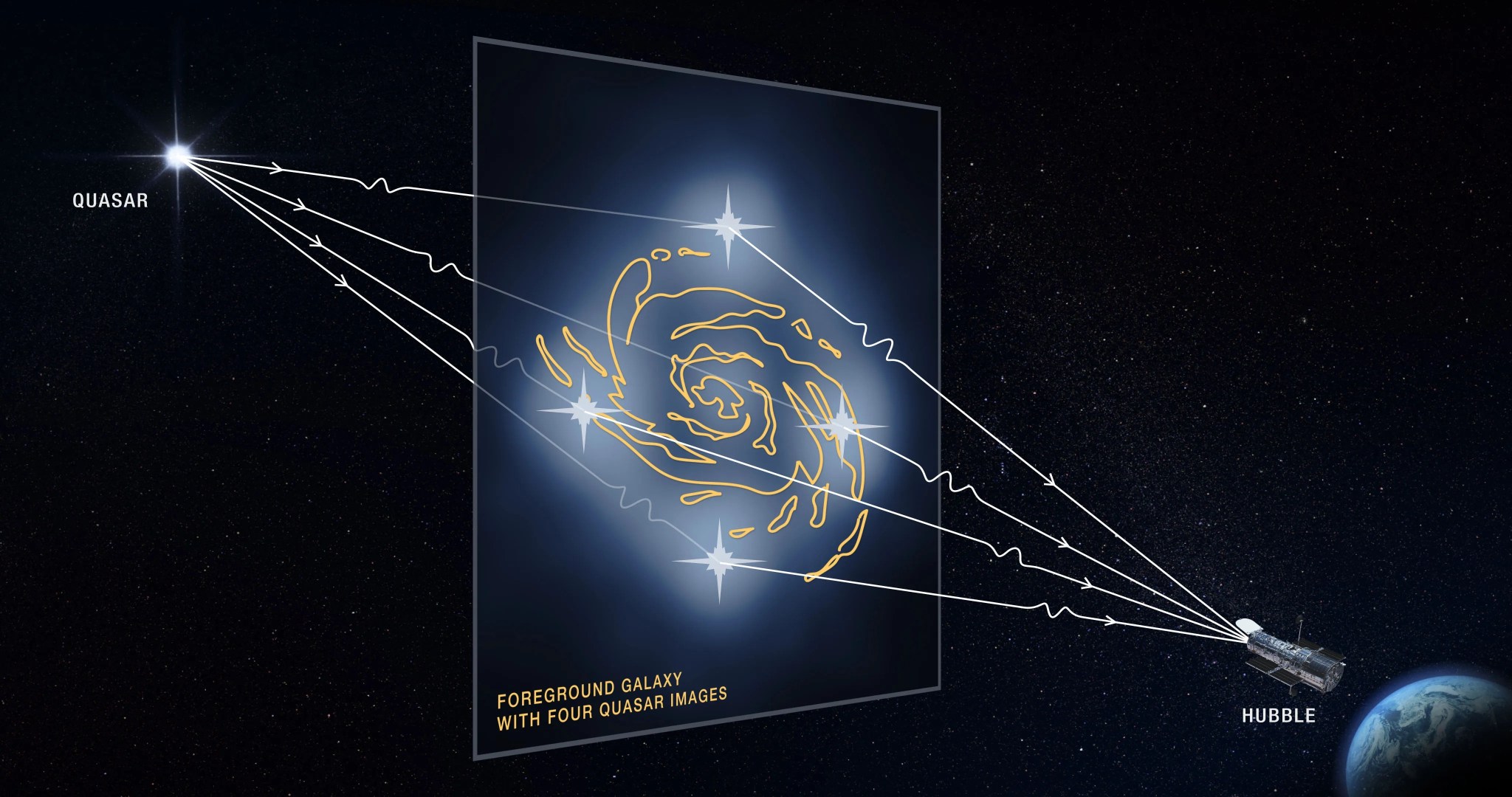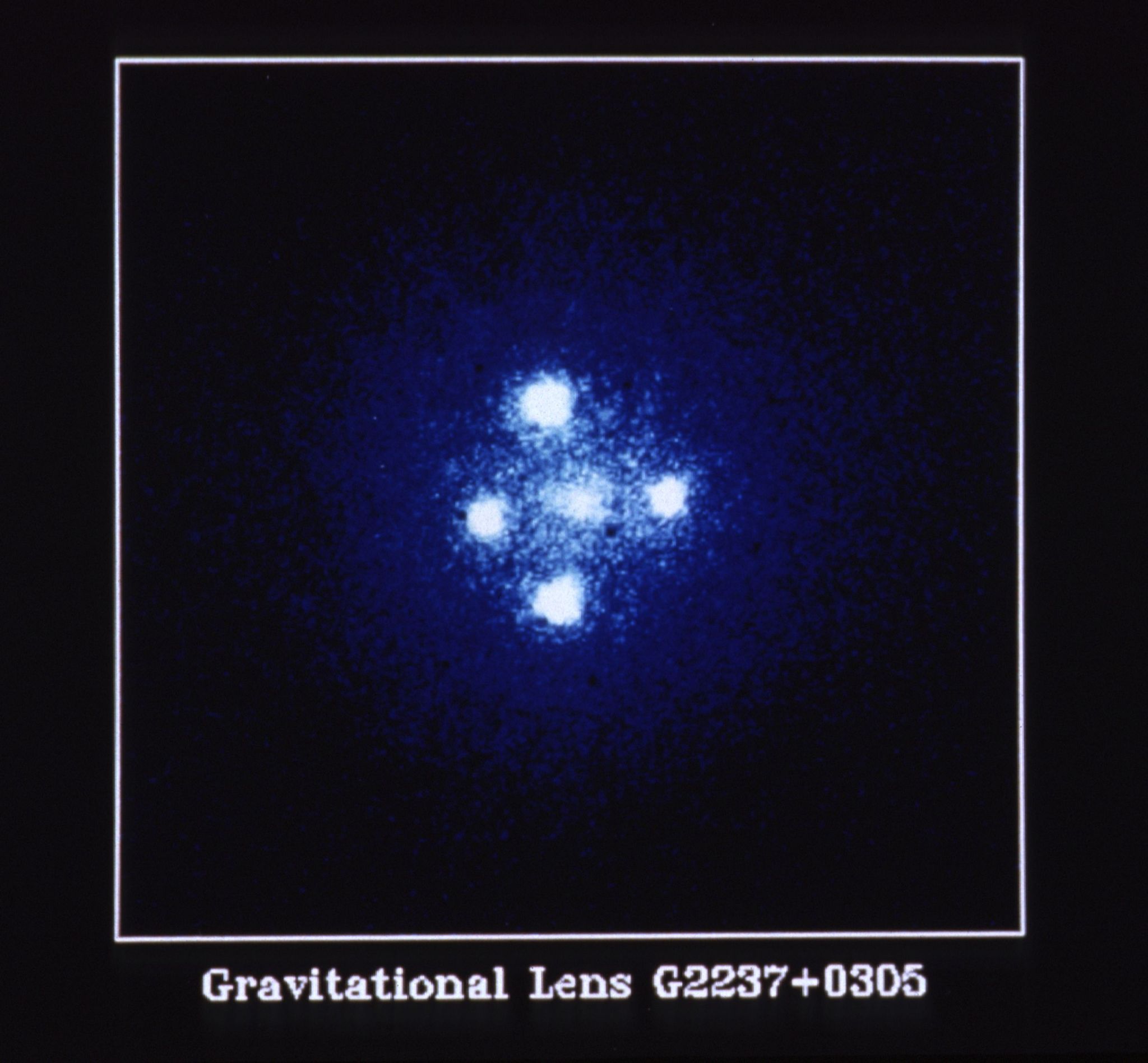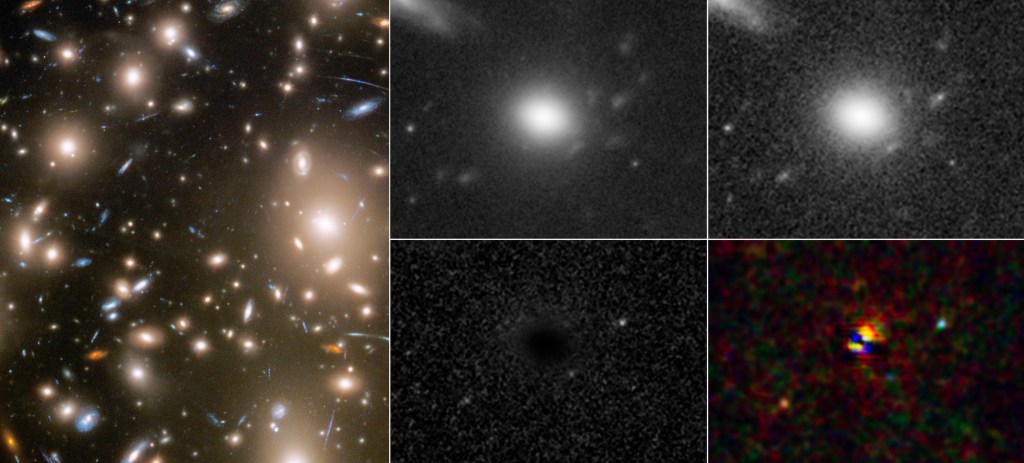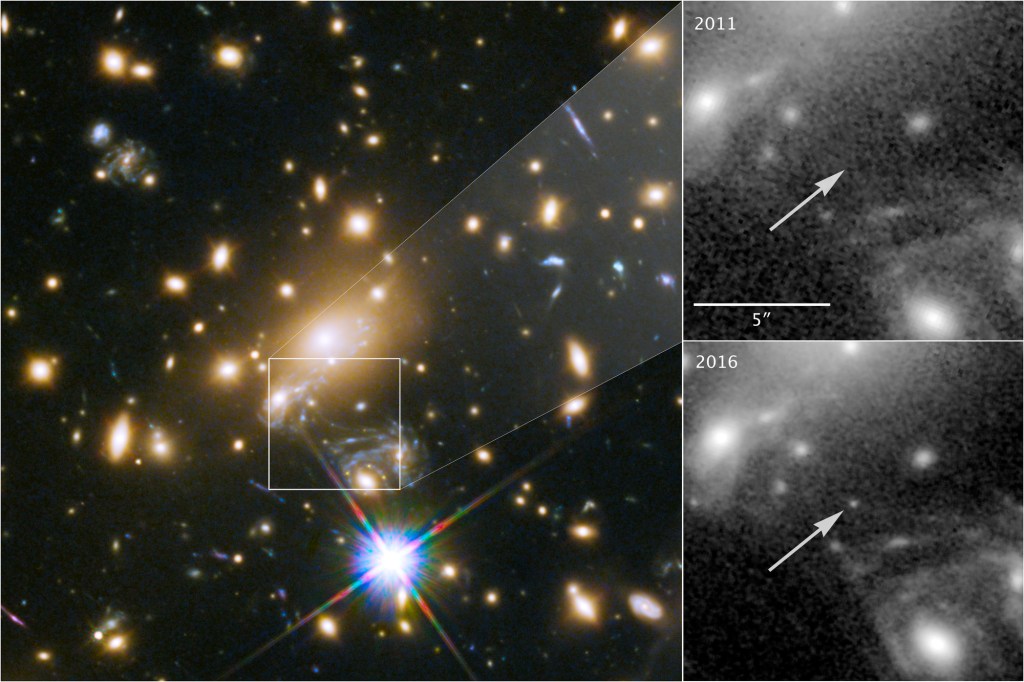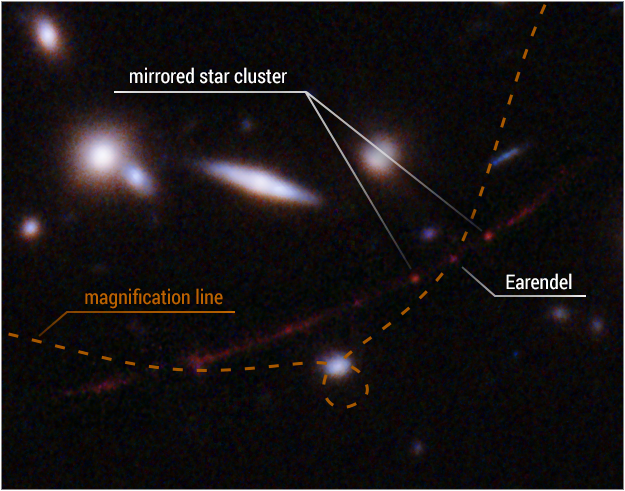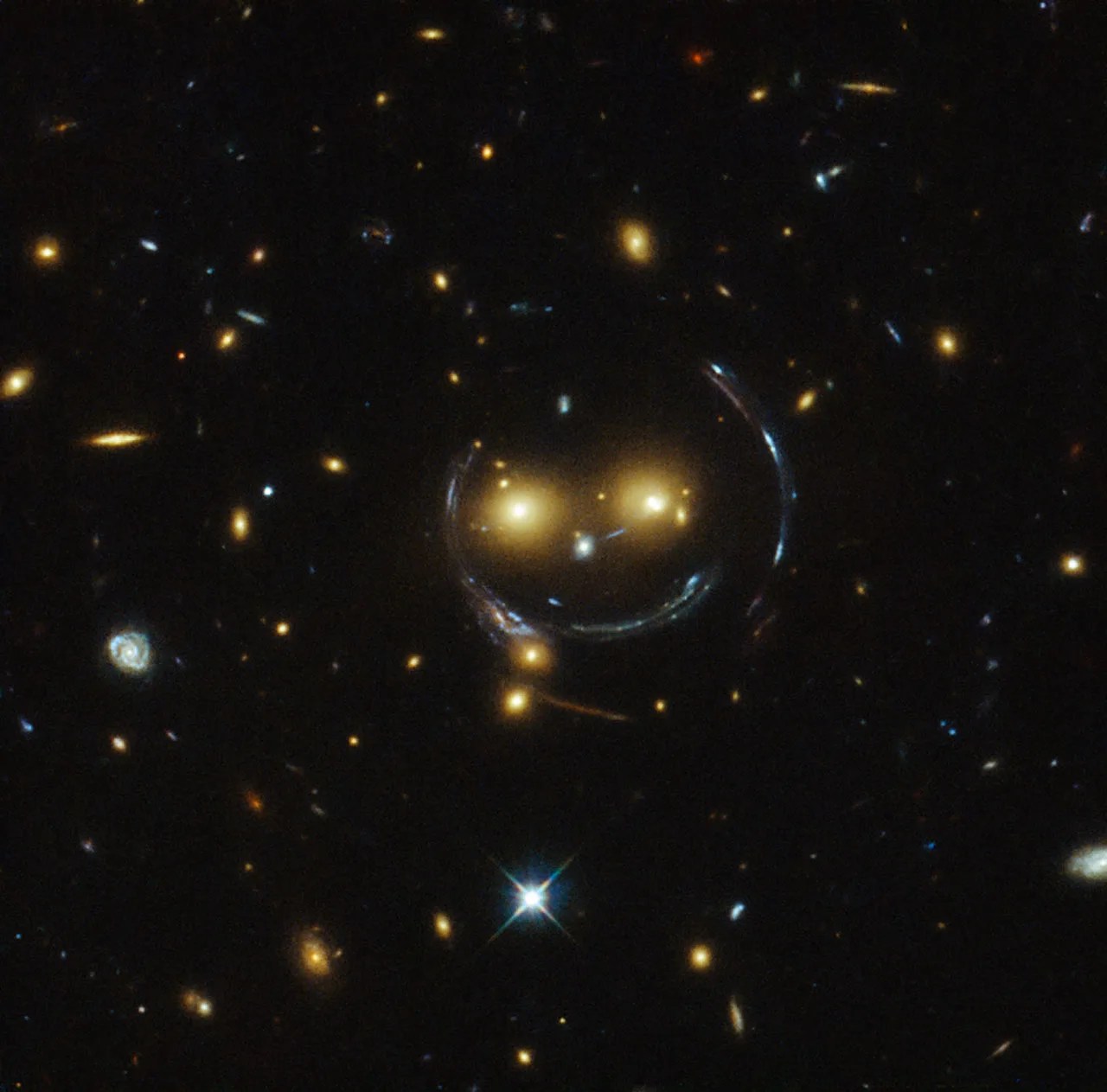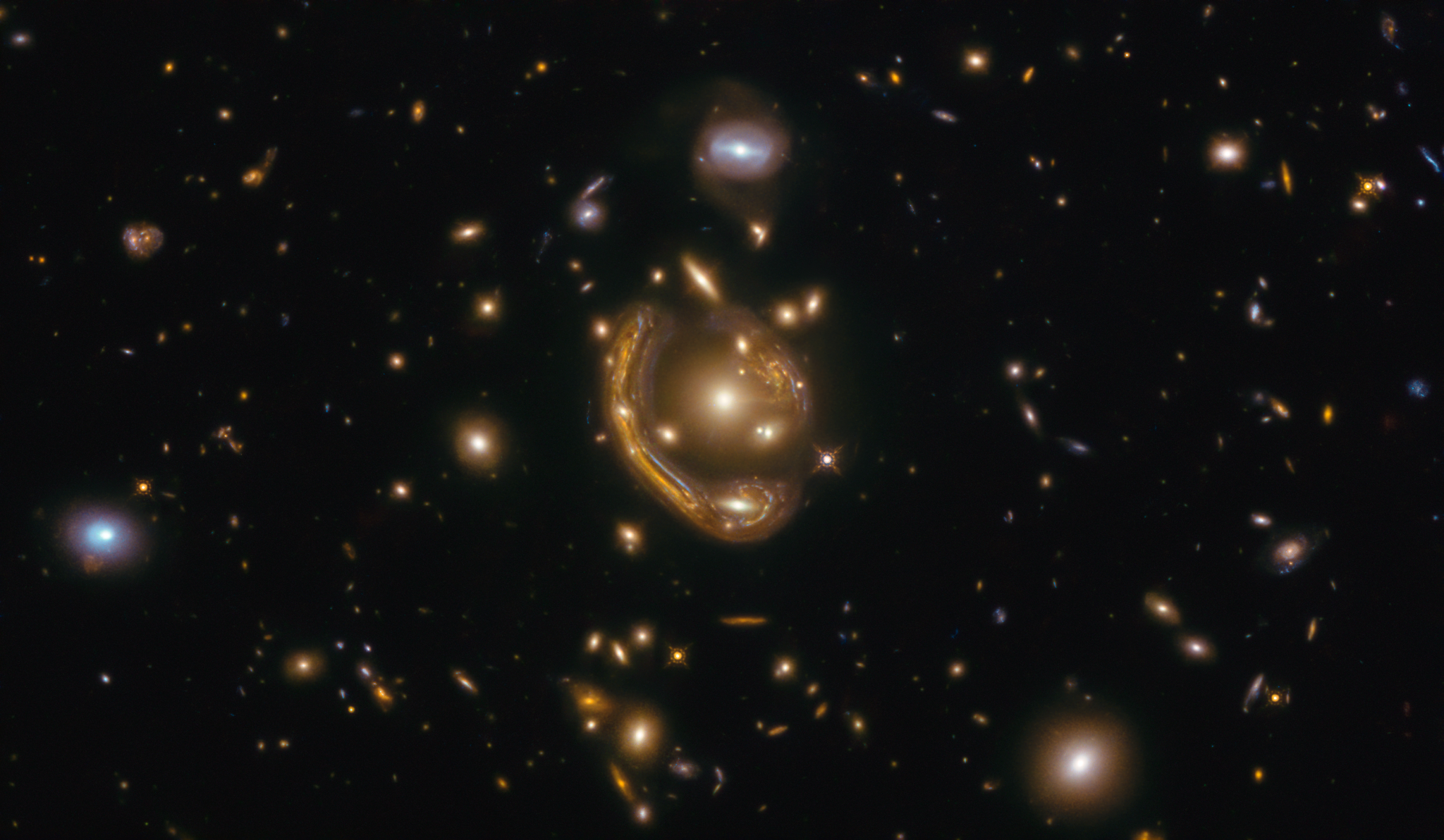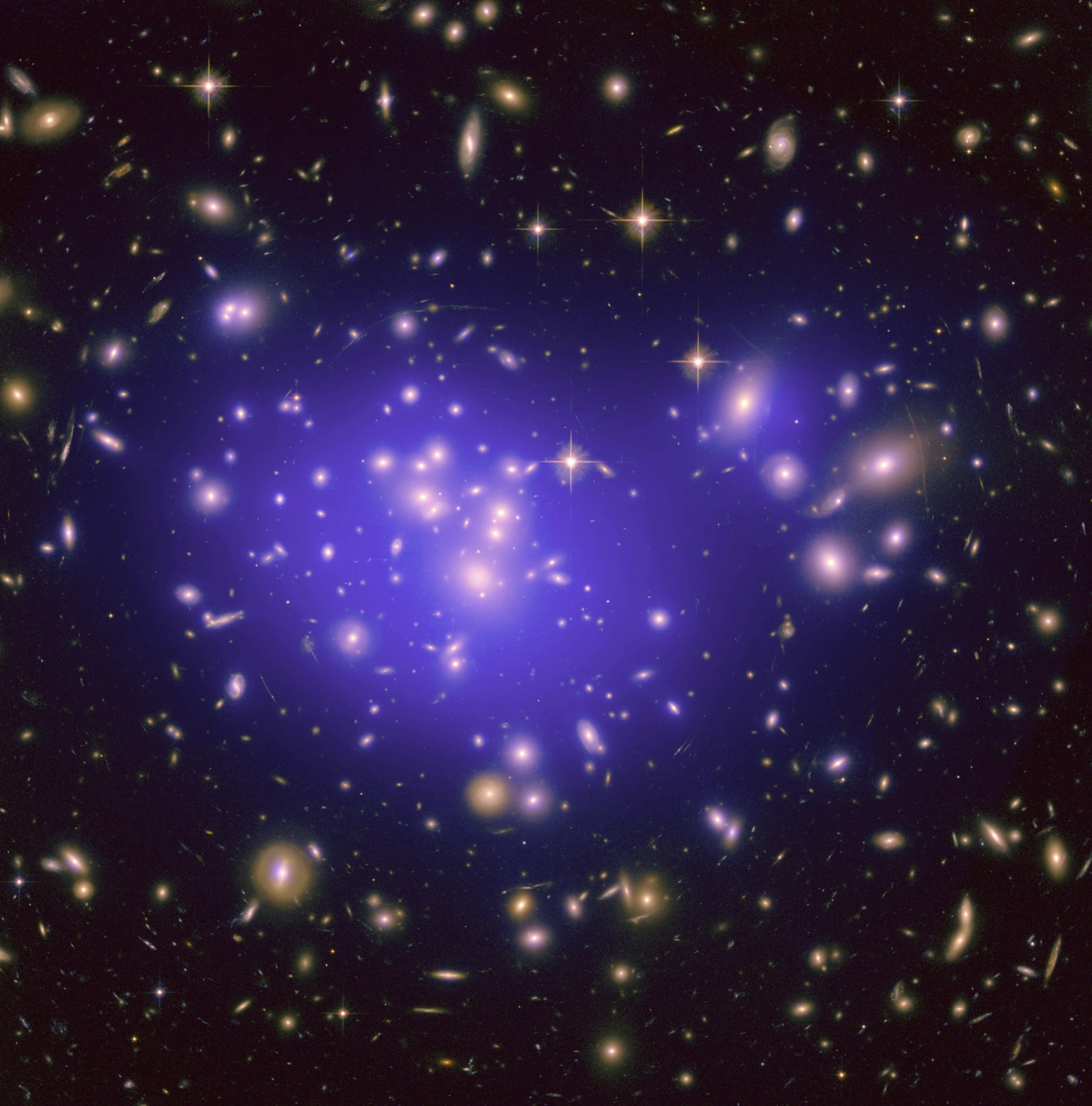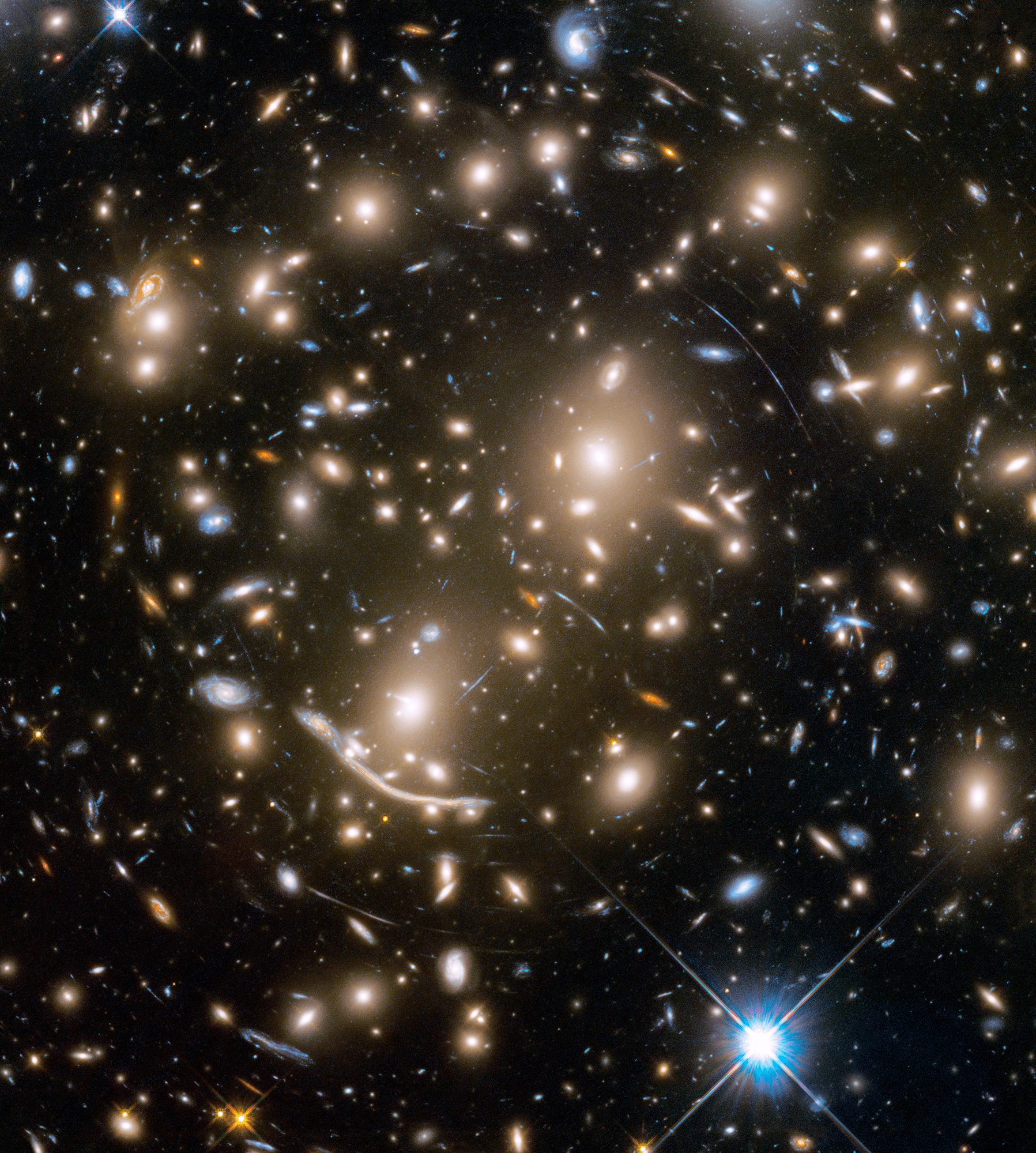Science
Hubble's Gravitational Lenses
Hubble's observations of gravitational lenses help us better understand the evolution of galaxies and the universe itself.
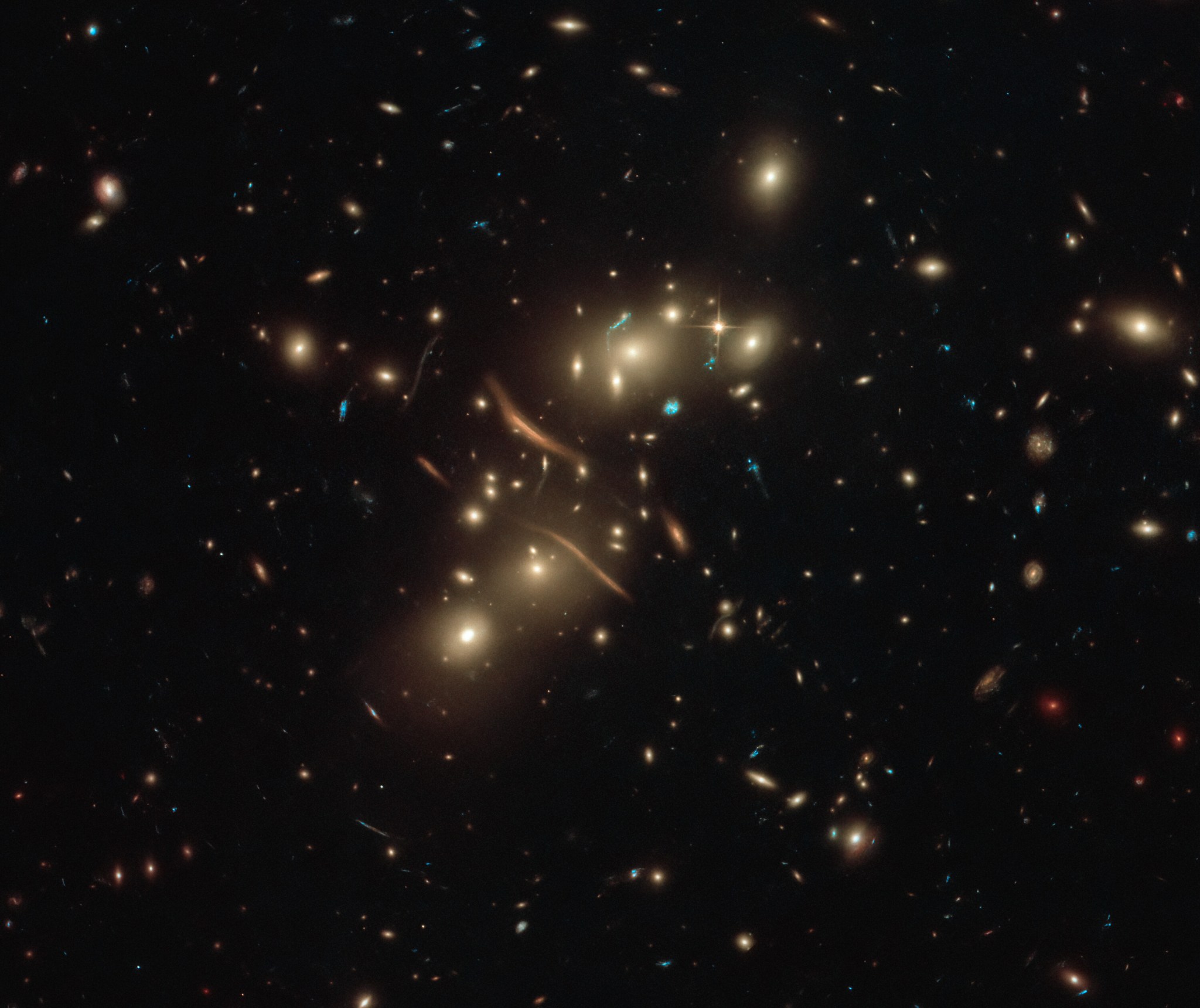
Overview
In the early twentieth century, three years before publishing his General Theory of Relativity in 1915, Albert Einstein recorded his thoughts on how light might behave as it moved through a strong gravitational field. He reasoned that gravity would act as a lens, deflecting light from more distant objects.
Einstein’s work hinted at a cosmic quirk of nature that boosts our view of distant astronomical objects. This phenomenon, called a gravitational lens, is a region of space that holds an enormous object whose gravitational field bends space and time. Any light passing through this field is distorted and amplified in a way that is similar to how light passes through an optical lens. Along with distorting and magnifying, the gravitational lens can produce multiple images of the same object. As the distant object’s light passes through the gravitational lens, it may take different paths. When that light emerges from the lens, we see several contorted images of a single object.
It wasn’t until 1919 that scientists tested and verified Einstein’s General Theory of Relativity. British astronomer, Sir Arthur Eddington, designed an experiment to measure if and by how much the Sun’s gravity would deflect the path of starlight passing near the Sun. He accomplished this by photographing stars near the limb of the Sun during a total solar eclipse. It would be another 70 years before radio astronomers announced the discovery of a double quasar, designated Q0957+561, that provided observational evidence for Einstein’s theory.
Today, astronomers regularly use gravitational lenses created by large galaxies and galaxy clusters as a way of extending our view, and Hubble’s sensitivity and high resolution allow it to see the faint lensed images of distant objects that ground-based telescopes are unable to detect because their images are blurred by Earth's atmosphere.
Hubble's View of Gravitational Lenses
Five months after its April 1990 launch, Hubble captured four images of a quasar in the gravitational lens, G2237+0305. Called an Einstein Cross, the image reveals a distant quasar gravitationally lensed four times by a relatively nearby galaxy.
By 1999, Hubble observations had significantly increased the number of known optical gravitational lenses, and when astronauts installed Hubble's Advanced Camera for Surveys during Servicing Mission 3B in 2002, it returned spectacular images of galaxy clusters gravitationally lensing some of the most distant objects we have ever seen. The Advanced Camera for Surveys is five times more sensitive and provides pictures that are twice as sharp as the previous work-horse Hubble cameras. It offers us exquisite views that continue to demonstrate Albert Einstein's prediction that gravity warps space and time, magnifying and distorting the light of more distant objects.
Stars
Galaxies and quasars aren't the only gravitationally lensed objects that Hubble has captured. The observatory has seen several gravitationally lensed supernovae, and astronomers were able to directly calculate the mass of a white dwarf star using Hubble's observations of a gravitational lens.
Hubble's best known gravitationally lensed stars include the two most distant stars ever seen. Hubble captured the first one in 2018. The enormous blue star, nicknamed Icarus, is so far away that its light took 9 billion years to reach Earth. Because the star’s light had such a long distance to travel, Hubble's observations captured the star it as it appeared when the universe was about 30 percent of its current age.
Just four years after the discovery of Icarus, Hubble broke its own record by finding a more distant star called Earendel. Earendel is so far away that its light took 12.9 billion years to reach Earth travelling at 186 thousand miles per second. Hubble’s image of Earendel captured the star as it appeared when the universe was only seven percent of its current age. The observation established an extraordinary new benchmark: detecting the light of a star that existed within the first billion years after the universe’s birth in the Big Bang (at a redshift of 6.2) – making it the most distant individual star ever seen. The star is positioned along a ripple in spacetime that gives it extreme magnification, allowing it to emerge into view from its host galaxy, which appears as a red smear across the sky. The discovery of both Icarus and Earendel were made possible by powerful gravitational lenses that boosted Hubble’s view.
In 2023, Hubble and NASA's James Webb Space Telescope combined their observations to study an enormous galaxy cluster some 4.3 billion light-years from Earth. This galaxy group, called MACS0416, is actually a pair of colliding galaxy clusters that will eventually merge into an extremely massive cluster.
Across the field of view, astronomers identified 14 objects whose light varies over time. Twelve of those are located in three galaxies that are highly magnified by gravitational lensing, and are likely individual stars or multiple-star systems that are briefly, very-highly magnified. The remaining two are within more moderately-magnified background galaxies and are likely supernovae.

Einstein Rings
Einstein's theory also predicts a special case of gravitational lensing called an Einstein Ring. When a distant light source is perfectly aligned with a powerful gravitational lens and the observer, the light source can curve symmetrically around the gravitational lens, causing a ring-like structure called an Einstein Ring.
Hubble's observations helped to more than quadruple the number of known, visible Einstein Rings.
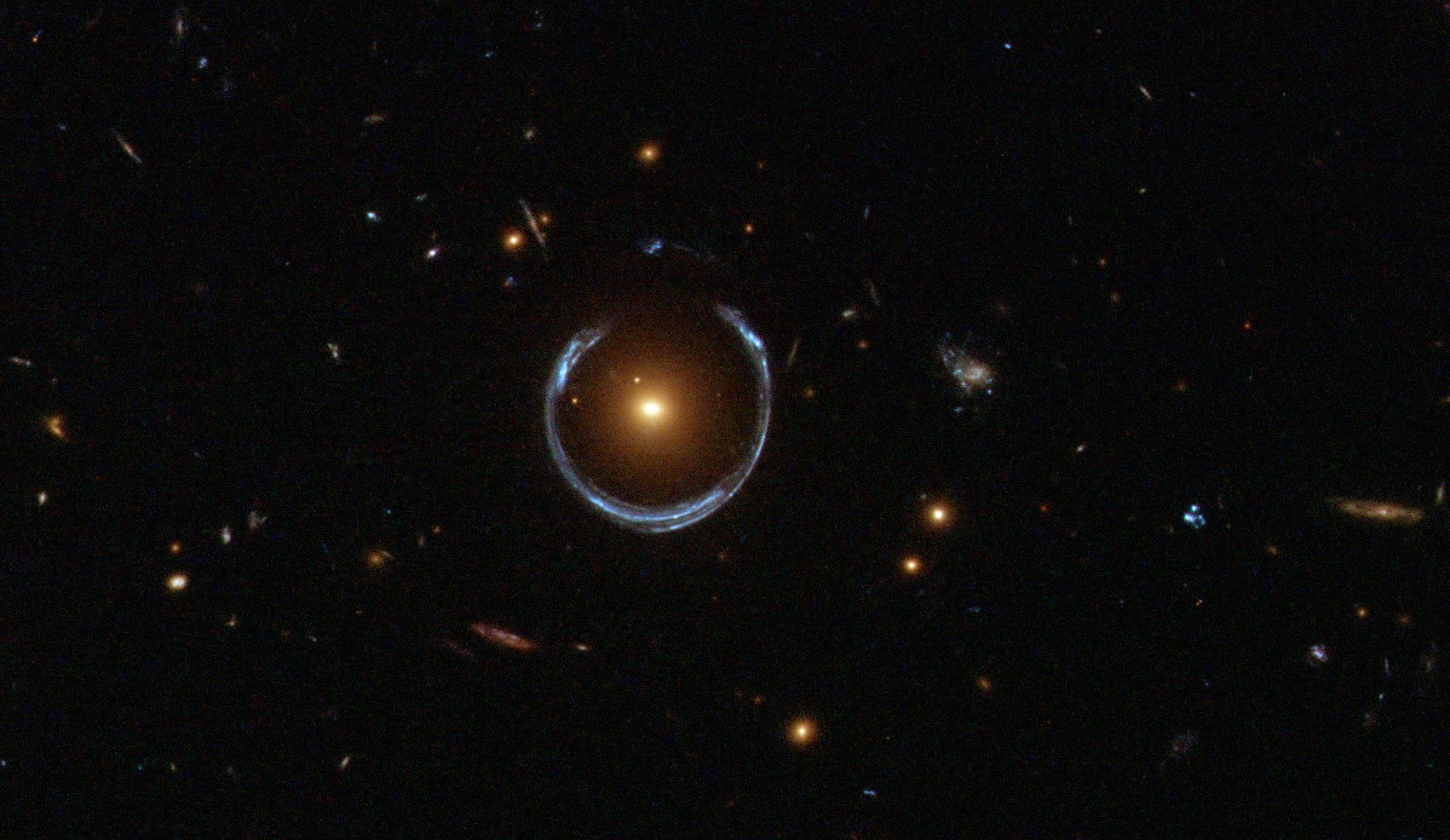
Exoplanets
Hubble teamed up with the W. M. Keck Observatory in Hawaii to discover a Uranus-sized planet around a distant star. They used a technique, called microlensing, that can find more distant and colder planets in long-period orbits that other methods cannot detect. Microlensing uses the gravitational pull of a foreground star to amplify the light of a background star that momentarily aligned with it. If the foreground star has planets, then the planets may also amplify the light of the background star, but for a much shorter period of time than their host star. The exact timing and amount of light amplification can reveal clues to the nature of the foreground star and its accompanying planets.
The Hubble and Keck Observatory microlensing observations revealed that the system, cataloged as OGLE-2005-BLG-169, holds a Uranus-sized planet orbiting about 370 million miles from its parent star, slightly less than the distance between Jupiter and the Sun. The host star, however, is about 70 percent as massive as our Sun.
Dark Matter
Astronomers also use gravitational lenses to study the non-luminous stuff of the universe we call dark matter. Visible matter reveals itself by shining brightly, but dark matter is only detected by its influence on the light we see. Large galaxy clusters, and the powerful gravitational lenses they create, offer astronomers a way of seeing dark matter's signature. By studying the magnified and distorted images lensed by enormous clusters of galaxies, astronomers can piece together the gravitational signature of dark matter.
To learn more about Hubble's dark matter discoveries, see Shining a Light on Dark Matter.
Gravitational lenses boost our vision, allowing us to see distant objects we would otherwise have missed. Hubble's pioneering work in observing these natural zoom lenses helped prove Einstein's theories while providing astronomers with the tools to probe these massive galaxies and model their lensing effects, allowing us to peer further into the early universe than ever before. Hubble also set the stage for NASA's James Webb Space Telescope and Nancy Grace Roman Space Telescope to see deeper, bringing us even closer to the beginning of the universe.
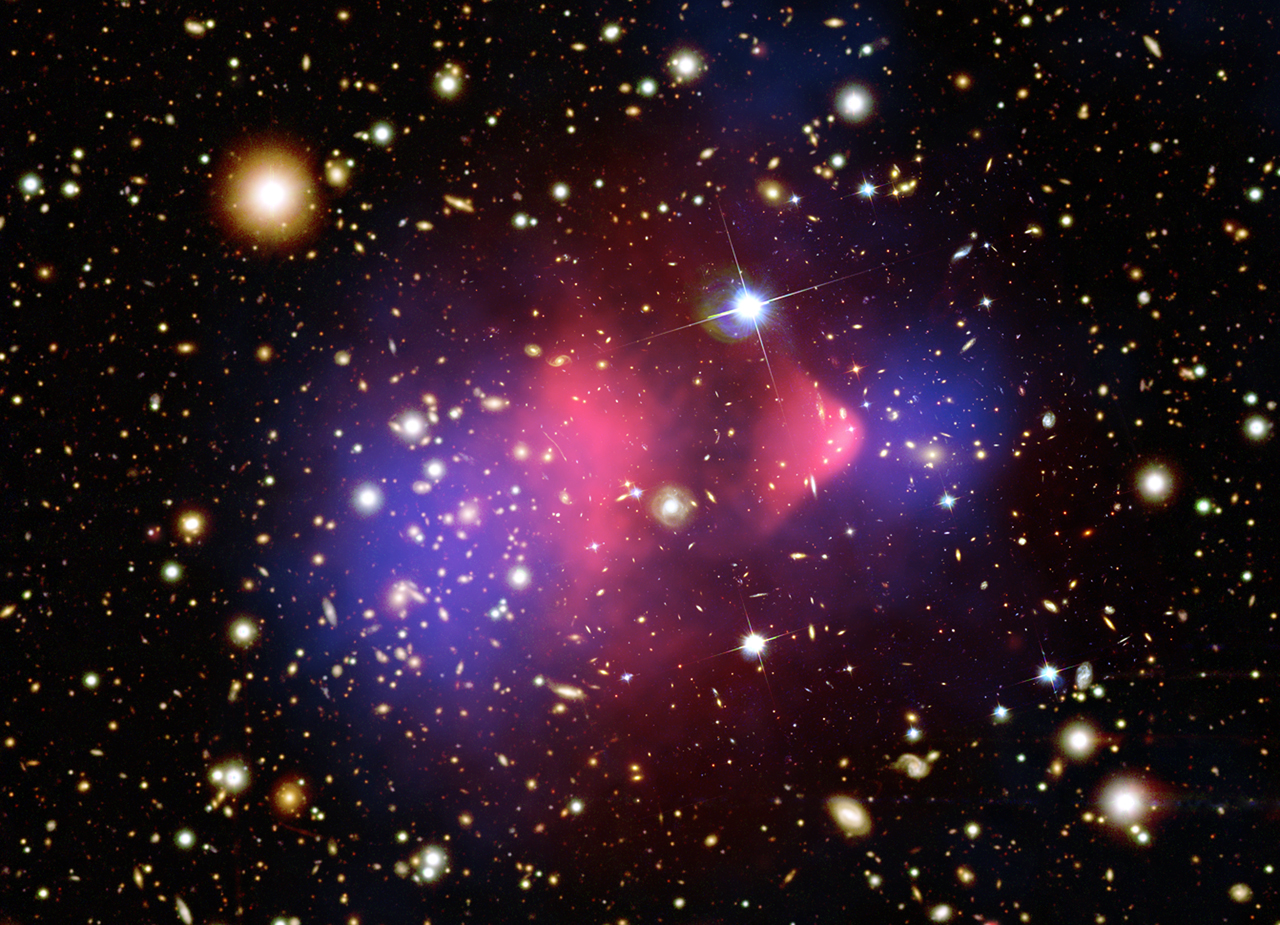
Hubble's Impact
Hubble helped astronomers better understand gravitational lensing. Its high resolution and sensitivity allow it to detect gravitational lenses that are too faint or distant for ground-based telescopes.
Hubble’s ability to capture images of gravitational lenses reveals new galaxies, and even distant stars and supernovae within those galaxies.
Because gravitational lenses allow us to peer far back into the early universe, Hubble's observations help astronomers better understand the conditions in which galaxies formed and evolved. Astronomers can use this data to map the evolution of galaxies, and even the universe itself, to what we see today.



























